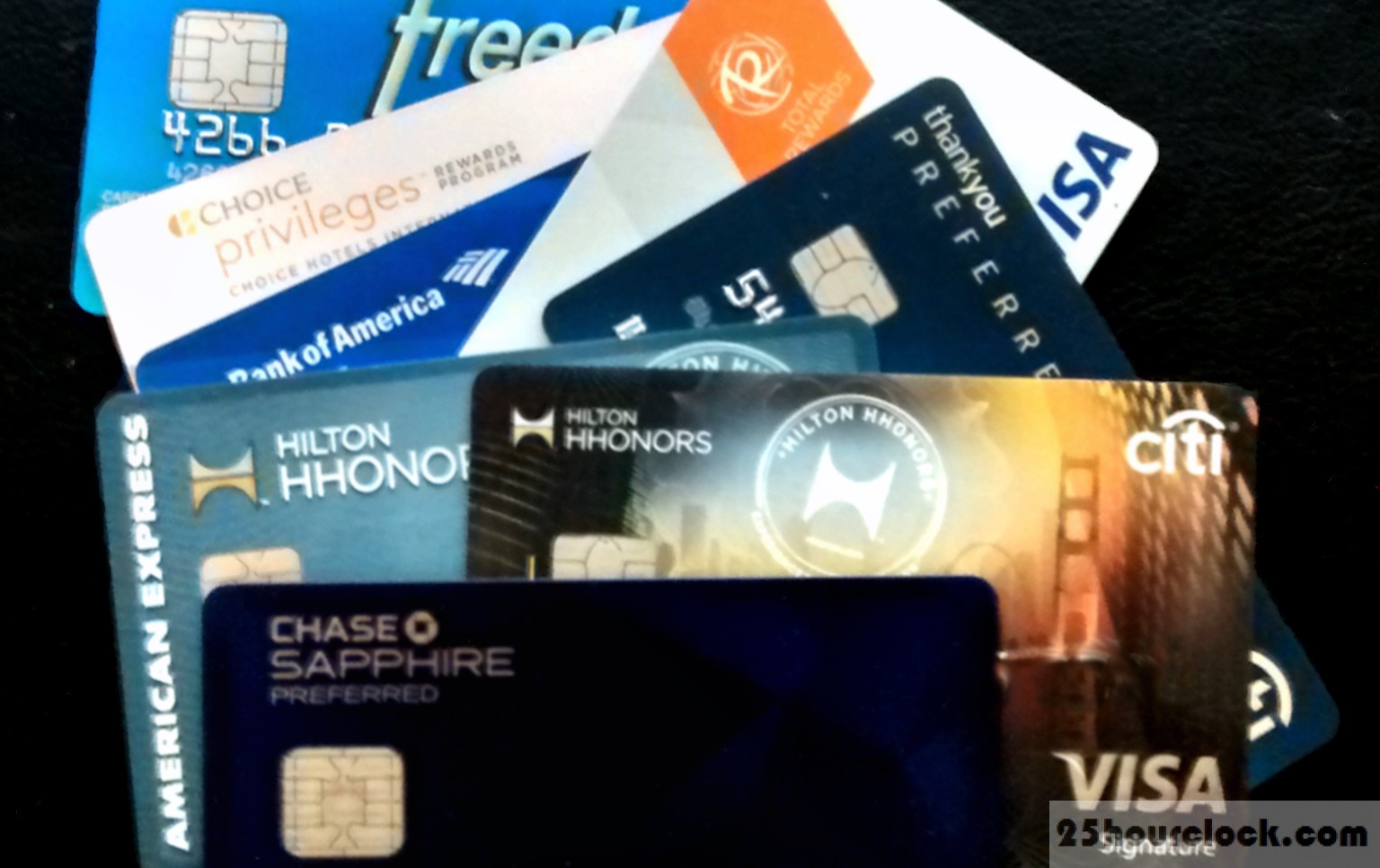Before taking up the hobby of opening multiple credit cards just for the signup bonus, make sure you consider the common pitfalls of such a practice. First, keep in mind that banks do not offer these bonuses in order to just give you a free vacation. They offer these bonuses because they expect interest and fees on the average customer to more than pay for it.
Spending too much
This is the most common pitfall and it may not be obvious it has even happened since it does not automatically mean you pay interest or fees. You may simply have eaten out more or bought a more expensive TV because you were working on a signup bonus, or even just because “Why not? I get points.”
It does not take much overspending to completely wash out the value of the points you receive. Make sure you only work on signup bonuses when you plan to spend the money anyway. And don’t plan to spend more in order to fulfill a signup bonus! The goal here is to save money!
Paying Interest
Have you paid any interest in the last year? How much free income do you have per month? These are questions that should be answered in this way before ever considering opening more credit cards: none, plenty.
You don’t have to make 100,000/yr or even 40,000/yr to engage in credit card churning, but you absolutely must have control of your finances. If you cannot set a credit card to be paid automatically in full every month, then your primary concern should be getting yourself in a position to do so. Doing that will be way more profitable in the long run than working with credit card bonuses.
Paying Annual Fees
Many cards have a near $100 annual fee while providing you with a signup bonus worth about $400. Contrary to what the banks want you to believe, it is hard to spend enough in a year at 1-2% earn rate to overcome that annual fee, especially if you are opening multiple cards.
It is essential to keep a spreadsheet with the cards you opened and when the annual fees are due. Only in the case of airline credit cards that include free baggage checks and priority boarding should you ever consider keeping the cards past the first year.
Additionally, you can’t open them again in a few years if you never cancel them.
Canceling the cards too quick
Cancel your cards right before the first annual fee or in the case of cards without an annual fee about a year after you quit using them. Don’t cancel the cards right after receiving the bonus.
While banks know many people will be taking advantage of signup bonuses, they tend to respond when you make it so obvious. It has been reported that banks permanently block customers who take this approach.
Not enjoying credit card churning
Maybe you are like me and enjoy this kind of thing. I love Travel Hacking, it is part of the fun!
But if you are not like that and consider dealing with money, points, programs, and endless searching for deals to be excruciating, then you will not enjoy the time and effort it takes to keep track all your points and find the best ways to use them. Sometimes I wonder if the banks make it confusing so you’ll spend your points in the least efficient way.
Which brings me to my last point…
Inefficient use of points
Most points are worth 1 cent per point, but that doesn’t mean you’ll get that much, nor does it mean you can’t make them worth more.
Last year, Citibank offered to let me use my Thankyou points at Amazon at a rate less than 1 cent per point. I imagine many people jumped on it because it was just really easy to do, even though the points were worth exactly 1 cent per point on any travel spent on the card.
That illustrates some simple examples, but the best way to get use out of points is to transfer points to airline programs. Points can be worth as much as 2 or 3 cents per point when compared to the cash price of some business class long haul flights.
For example, at this moment I have 160,000 United miles and I love taking trips to Asia from the United States. I can buy one business class roundtrip ticket for 160,000 points which equals spending $3500 if purchased by cash (+/- $1000 depending on destination). This is 2 cents per point. Optionally, I could buy two roundtrip economy for the same amount of points to the same destination. Those trips in cash would cost about $800 giving me closer to the 1 cent per point. Of course, I prefer taking two free trips rather than spending points on just having a more comfortable 12 hours. These kinds of decision will seem endless to you and it is important to always stay abreast of your options.
Points also allow crazy itineraries that may be prohibitively expensive in cash. Any time you fly one-way from the USA to Asia, for example, the cash price is always significantly higher than each leg of a round trip would be. The points price however is usually the same.
Points tickets also allow stopovers and such that are much harder and more expensive with cash tickets.
